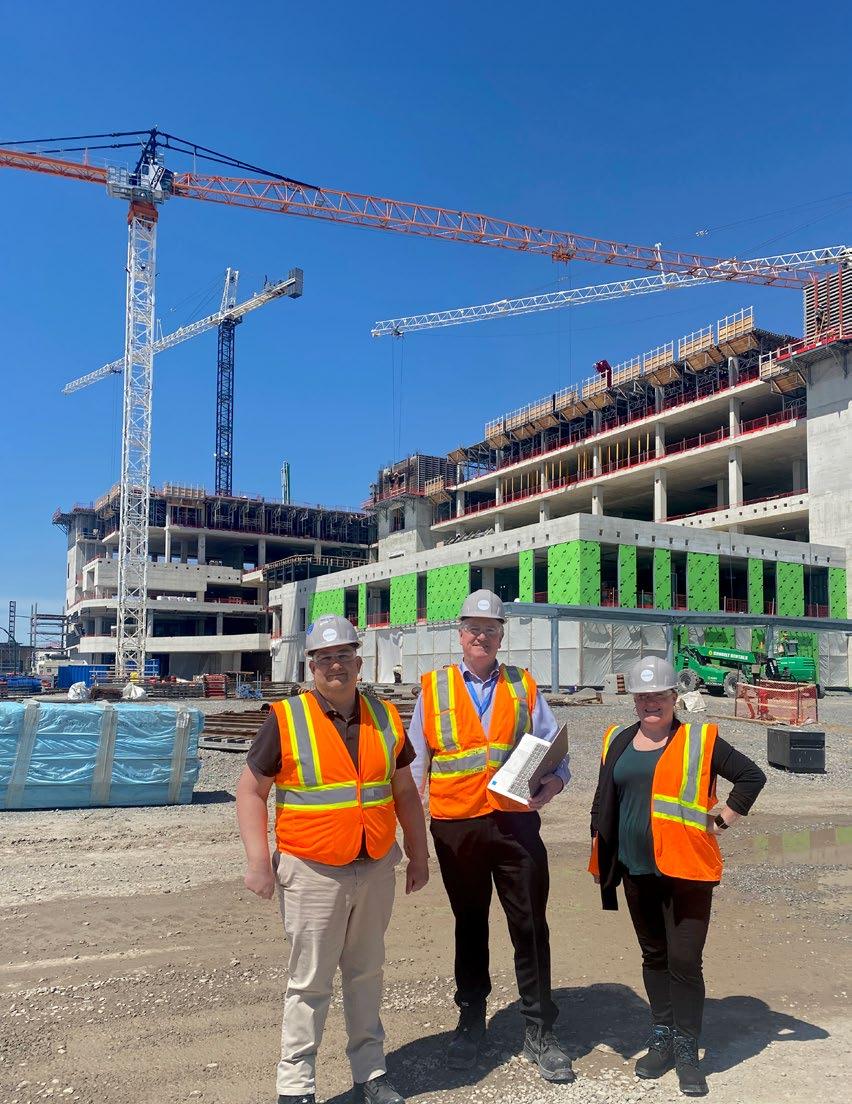

SOUTH NIAGARA HOSPITAL Project Newsletter
Photo: Michael Glanzmann, Cam Yates and Stevie
from
SNH
Project Goals
Planning for the Unpredictable
We are designing a hospital that is adaptable, flexible, and responsive — built to meet today’s state-of-the-art healthcare needs while anticipating future demands and supporting the long-term health of Niagara’s people and environment.
Planning a hospital for the future is no simple task — especially when that future is unpredictable. While population growth trends and census projections offer some insight, unforeseen developments like technological breakthroughs or global health crises can quickly shift community needs. So, how can a hospital be prepared for what it cannot predict? The answer lies in designing a building that is adaptable, flexible and responsive. These principles form one of the six core project goals guiding the development of the South Niagara Hospital. By incorporating flexibility and planning for future changes, the hospital is being designed not just for today, but for whatever tomorrow may bring.
Uniform Space Designs
One of the ways we are making the SNH flexible is by designing generic and uniform spaces that can be used for multiple departments. For example, there will be 80 exam rooms throughout the hospital in areas such as the Emergency Department or ambulatory care spaces. Almost all of the rooms have standardized layouts so that all staff and physicians can walk into any exam room and have the tools they need in a familiar arrangement.
Another example is the Complex Care and Medical/ Surgical inpatient bedrooms that have consistent layouts at multiple scales — floor, pod and room. Consistency in these spaces will support the ability to convert between care types with minimal disruption if the need arises in the future.
This principle of standardization has been applied

Patient, Family & Staff Experience

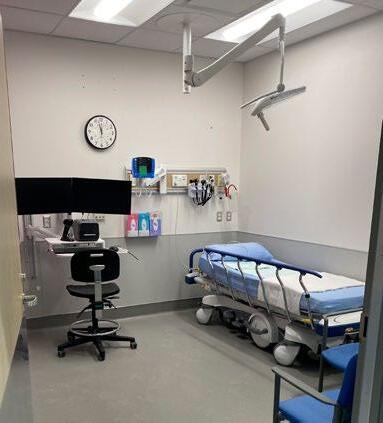
across many different spaces in the hospital, including procedure rooms, medication rooms and more, which allows for flexibility in day-to-day operations, but also over time as the needs of the hospital change.
Flexible Workplace Strategy
In order to maximize the amount of clinical space in the building and respond to the workplace strategy that was developed through an extensive amount of user engagement, Niagara Health’s workplace environment will be changing with the South Niagara Hospital.

Examination room in the high-fidelity mock-ups. Final design may change.
We will be moving away from assigned smaller office spaces, and transitioning to larger open-concept touch-down workstations. This also supports the hybrid work model that Niagara Health has adopted for many administrative positions. Based on feedback received, staff want a more fluid and flexible open workspace where collaboration can be supported. Creating open concept workspaces also means greater access to natural daylight and outdoor views, which was also identified as a priority by staff and is one of the many wellness features of the hospital. Recognizing the need to balance open spaces and privacy, workstations will have access to a variety of supports, such as breakout and meeting rooms, phone rooms and resource spaces.
By removing separations between administrative departments, the building layout also allows for future flexibility between departments as they grow or shrink.
Planning for Future Expansion
Recognizing the population in our region is likely to grow in time, the South Niagara Hospital site was planned to be able to accommodate both internal and external future expansion. The 50-acre greenfield site was mapped out in a way that will allow future growth around the building and street entrances. Areas near the Emergency Department and diagnostic imaging entrances are designed to allow external expansions to those departments with minimal impact to building access, overall design and the ongoing operations. Where departmental growth may be anticipated in time, certain spaces within the building are also designed in a way where they could be easily expanded into other departmental spaces. Space on the site has also been identified to accommodate a potential parking garage if the need arises in the future, and even space for a total hospital redevelopment or ancillary building on the northeast corner of the site.
Pandemic and Disaster Planning
Thoughtful consideration was given to pandemic, outbreak and disaster planning, which often puts an increased demand on hospital resources. Features such as decontamination areas, double

door vestibules that can create negative pressure or anterooms, and segregated traffic routes are some examples of pandemic planning that have been incorporated in the building.
As part of disaster management planning, consideration was given for a potential CBRNE incident - an emergency involving chemical, biological, radiological or nuclear materials, possibly combined with explosives - the site layout has incorporated space for a CBRNE containment zone.
Technology and Innovation
Technology plays a major role in this project, and touches almost all aspects of building operations in support of healthcare services. One of the challenges, however, is that technology is evolving at a rapid pace. While we can’t predict what the future will bring, as much as possible we have built flexibility into the project by incorporating infrastructure to support emerging innovations.
The South Niagara Hospital will be introducing many new technologies to Niagara Health, for example the Automated Transport System (ATS) that will be used to transport supplies and materials autonomously throughout the hospital. Automated Guided Vehicles (AGV) and Autonomous Mobile Robots (AMR) will move along designated paths and dedicated elevators and will deliver materials to various locations where they will be met by staff, helping to improve workplace efficiencies.
Look at past issues of the South Niagara Hospital Project Newsletter to learn more about each project goal, and how they are shaping the hospital design.
Hospital Highlight
The hospital is designed to be flexible and responsive, with room for future expansion, both within the building and on the hospital site. Standardized and universal spaces help improve efficiencies, reduce errors, and allows for flexibility that will make it easy to adapt for future needs.


Why is ICAT so essential? “Everything touches technology these days, and we know that its impact will only continue to grow,” says Yates. “From patient care systems to communications and signage, technology is a massive part of the project and is embedded in nearly every aspect of the hospital.”
For a building designed to operate for 100 years, future-proofing is a key priority. Wherever possible, flexibility and adaptability have been built into the project, such as additional power outlets and data ports, extra conduits for future equipment and infrastructure ready to support evolving needs. Even the broader hospital site has been designed with future expansion in mind.
“We don’t know how technology is going to change in the future, so as much as possible we’ve tried to put in the infrastructure so that our building can adapt to change,” says Yates.
Given the complexity of the project, certain ICAT components need to be in place as early as 18 months
“ We don’t know how technology is going to change in the future, so as much as possible we’ve tried to put in the infrastructure so that our building can adapt to change."
before opening day. Over the next couple of years, the primary focus for the SNH ICAT team will be preparing the building for the network go-live, scheduled for early 2027. This is the first of four major ICAT milestones leading to the hospital’s opening.
The result is a hospital that will be ready not just for Opening Day, but for the innovations still to come.
SNH is being built as a truly modern, connected facility — designed to grow, adapt and serve the community well into the future.
Explore More Online
Live Feed Camera
Check out the live feed camera, providing a new image from the South Niagara Hospital construction site every five minutes.
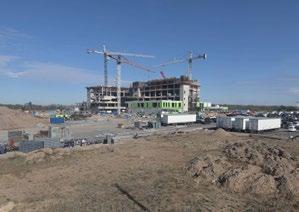
Mock-up Videos
NEW! Watch videos from the mock-up site to learn more about some of the exciting hospital features.
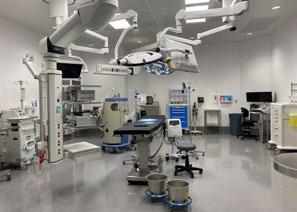
See the Live Feed Watch the Videos
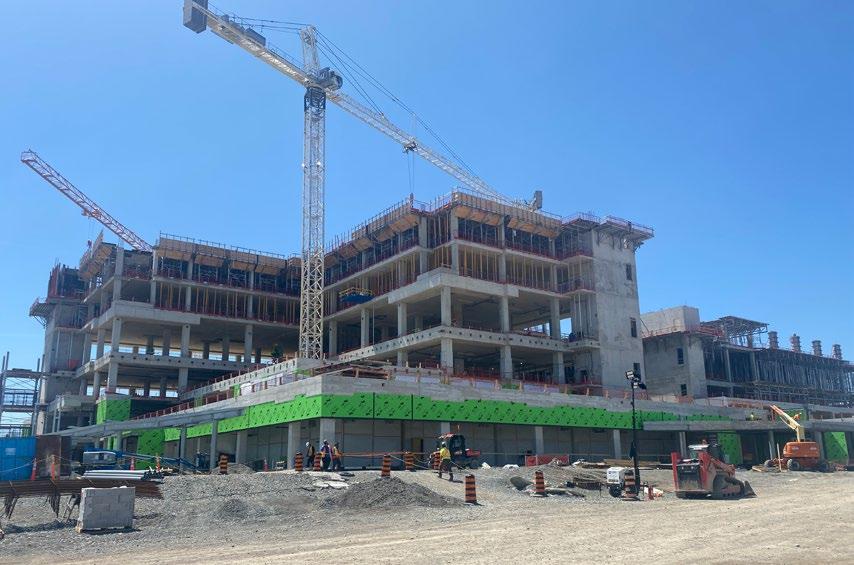
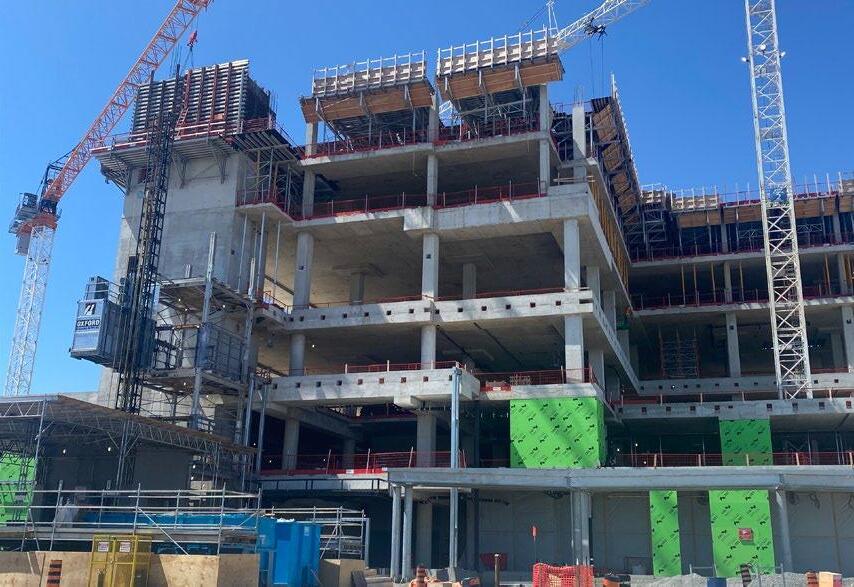
Construction Timeline

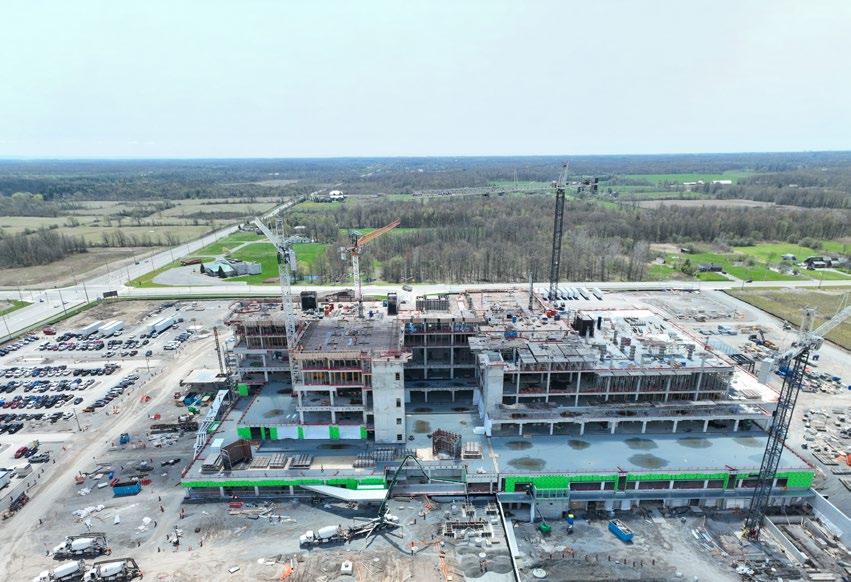
When Nature Calls
The South Niagara Hospital will have 788 washrooms throughout the facility.
Every patient room in the Complex Care and Medical/Surgical units (439 rooms) will include a private washroom, complete with a shower, sink with ample countertop space, and accessibility features such as handlebars on both sides of the toilet — designed to enhance comfort and convenience during each patient's stay.
In addition to in-room facilities, washrooms will also be available throughout the hospital in public areas and dedicated staff-only spaces.
Photos from high-fidelity mock-up patient bedroom. Final design may change.

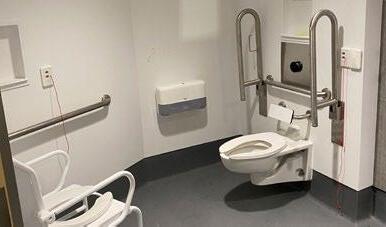
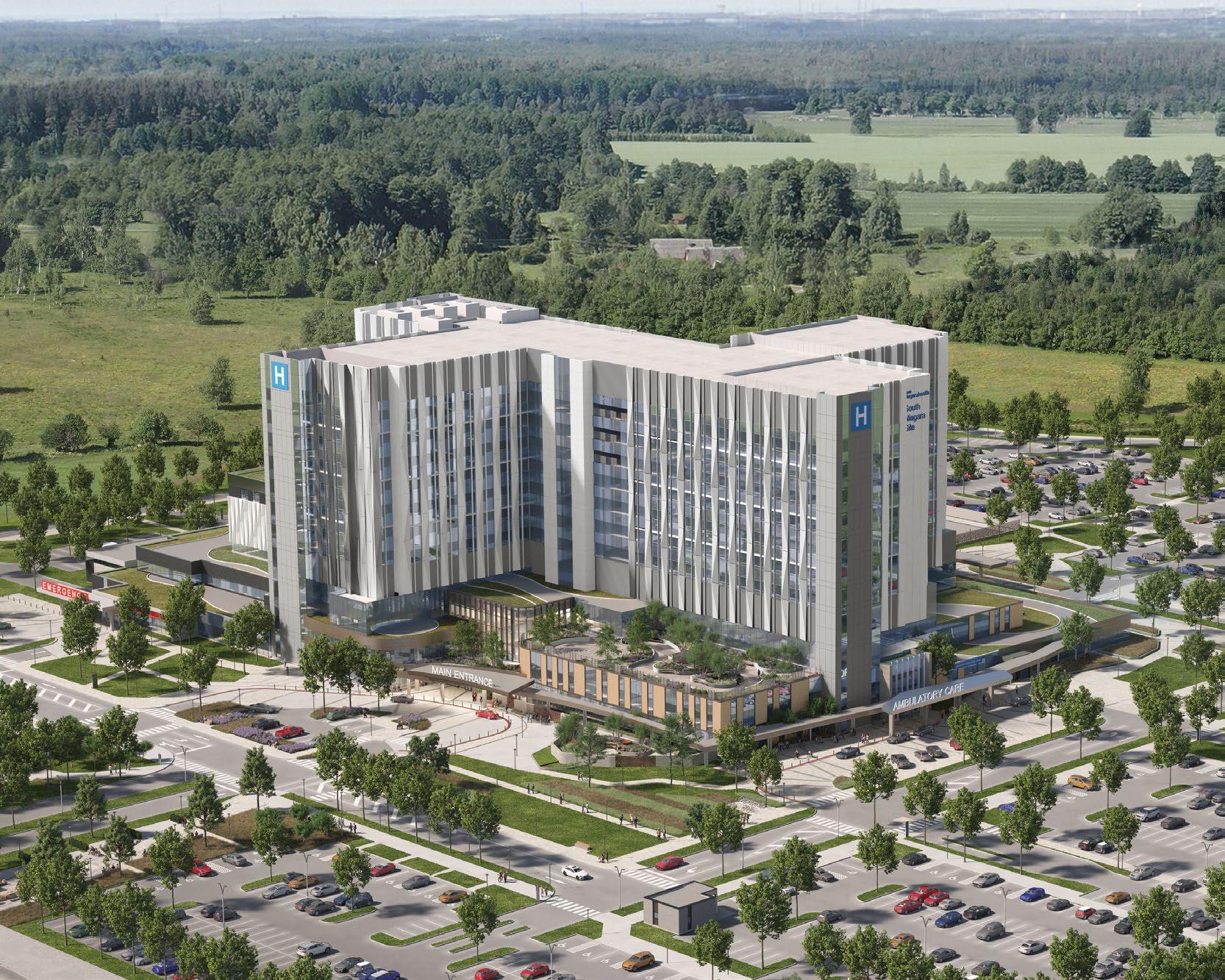
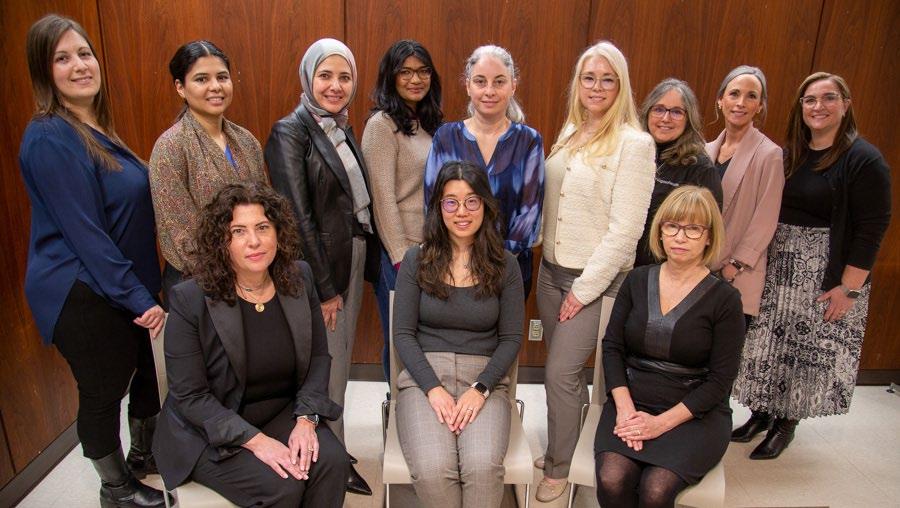
Nathalie Stewart has been with Niagara Health for more than 35 years, working in operating rooms performing various roles from staff nurse to charge nurse. She was also an operating room perioperative nurse educator for close to 10 years. Along with many of her colleagues on the Operational Readiness Team who have hands-on experience from working in hospitals and clinical settings, she brings a unique perspective to the project.
“I find my work on the Redevelopment Team to be really motivating. It’s exciting to be able to apply my knowledge and past healthcare experiences to this project to create a better space for the future,” says Stewart. “I’m always in awe of how knowledgeable the people are on our team. We have really strong role models and leaders, and it’s inspiring to work with such a diverse group of strong professionals who bring a lot of different experiences to the table.”
Andrea Nguyen is the Director of Operational Readiness for the South Niagara Hospital Team. As a registered respiratory therapist, she brings clinical knowledge to the team combined with years of experience in project planning and management.
“
It’s exciting to be able to apply my knowledge and past healthcare experiences to this project to create a better space for the future.
“I love the intersection between design and clinical practice. I get to bring my clinical knowledge and apply it to design work in a way that is going to advance care for our patients,” says Nguyen.
“The women on our team are among some of the smartest women I know, and many of them have had to advance their careers in a somewhat male-dominated industry. I admire their tenacity for their career goals, and really value the opportunity to work with other women who can relate to the challenges that come with juggling families, careers and personal growth.”
Women on the South Niagara Hospital Team. Back row from left: Antonietta Culic, Miriam Singh, Reem Khatab, Cassandra Samaroo, Carmen Cernusca, Carolyn Gibbs, Nathalie Stewart, Jessica Welychka, Jessica Mottola. Front: Tammy Chaput, Anastasia Adriyanta, Karen Adams. Missing: Yaprak Berktin, Nicole Bindoo, Vidya Castelino, Izabela Cawricz, Stevie Christopher, Barb Evans, Gillian Gregory, Alexandra Hutchison, and Andrea Nguyen.
